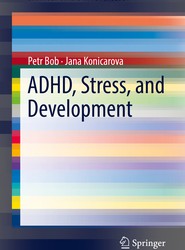(To see other currencies, click on price)
MORE ABOUT THIS BOOK
Main description:
This brief guide takes current clinical trial protocols to
task and replaces them with a contemporary framework for improving
next-generation antidepressants and their underlying science. Innovative models
are based on a nuanced, neurologically-informed understanding of drug
mechanisms and the component cognitive, mood, and behavioral aspects of
depression. The book reconceptualizes not only the clinical trial process but
the clinical concept of depression itself as essential to bringing
pharmaceutical research and development up to date, boosting efficiency and
effectiveness, finding new molecules, and reducing waste. Case studies and a
review of salient depression scales illustrate the potential benefits of such
wide-scale change.
Included in the coverage:
Why
now the need for a new clinical trials model for antidepressants?
Aims
and basic requirements of clinical trials: conventional and
component-specific models.
Methods
for measuring the components and the profile of drug actions: the
multivantaged approach.
Achieving
the ideal clinical trial: an example of the merged componential and
established models.
Prediction
and shortening the clinical trial.
The
video clinical trial.
Clinical Trials of
Antidepressants will interest a varied audience, including clinical
investigators, academic and pharmaceutical company scientists, clinical trial
organizations, psychiatrists, outpatient physicians, psychotherapists, clinical
psychologists, psychology graduate students, medical students, and government
agencies such as the FDA.
Contents:
Introduction.- Why Now the Need for a New Clinical Trial Model for Antidepressants?.- Reconceptualizing Depression and the Componential-Specific Model of Clinical Trials.- Aims and Basic requirements of Clinical Trials: Conventional and Component-Specific Models.- Methods for Measuring the Components and Profile of Drug Actions: The Multivantaged Approach.- The Component-Specific Model Applied in a Clinical Trial: An Example.- Comparing the Component-Specific Model Directly with the Established Diagnosis-Specific Trial.- Prediction and Shortening the Clinical Trial: Further Advantages of the Component-Specific Model.- The Video Clinical Trial and the VIBES Method.- Conclusions.
PRODUCT DETAILS
Publisher: Springer (Springer International Publishing AG)
Publication date: February, 2016
Pages: None
Weight: 1416g
Availability: Available
Subcategories: General Issues, Pharmacology, Psychiatry, Public Health
From the same series















